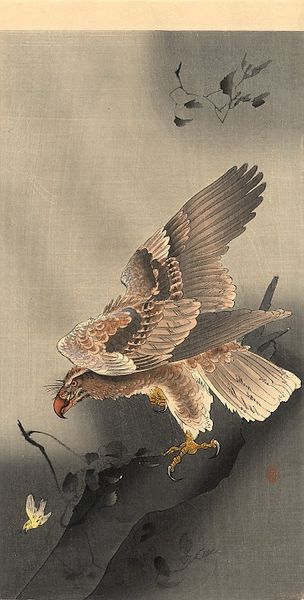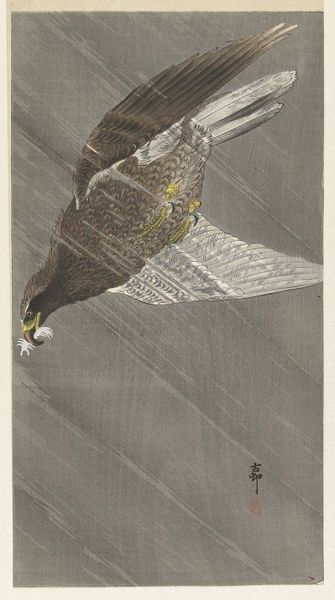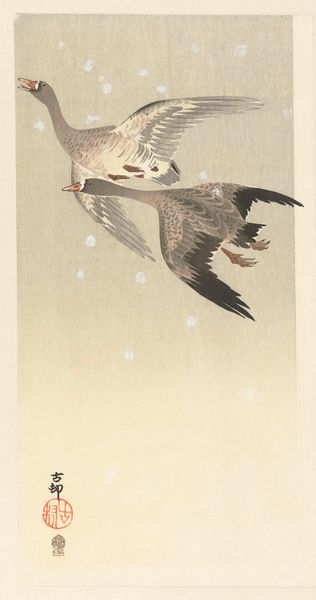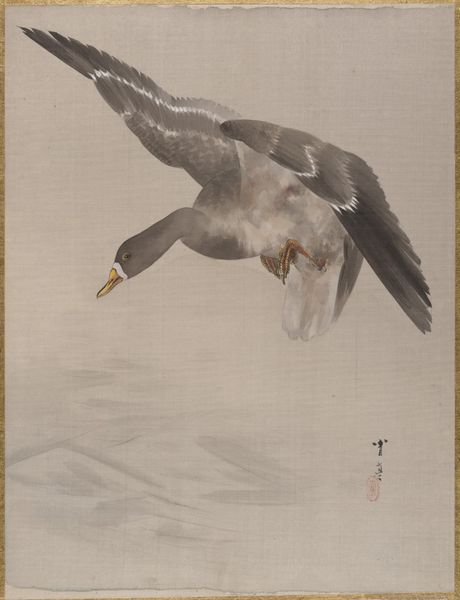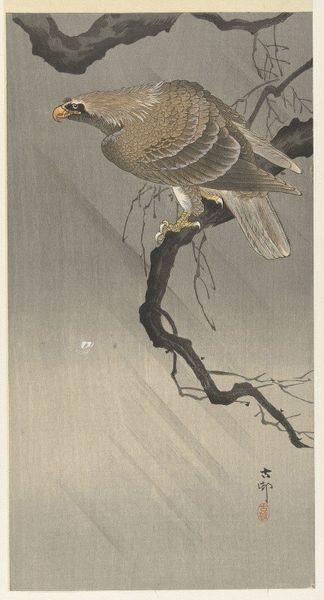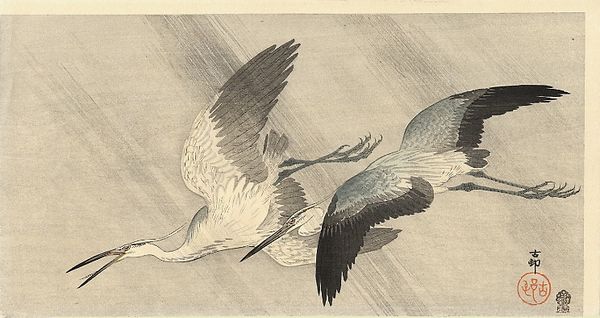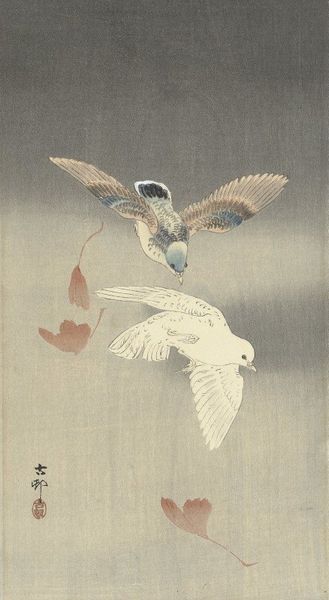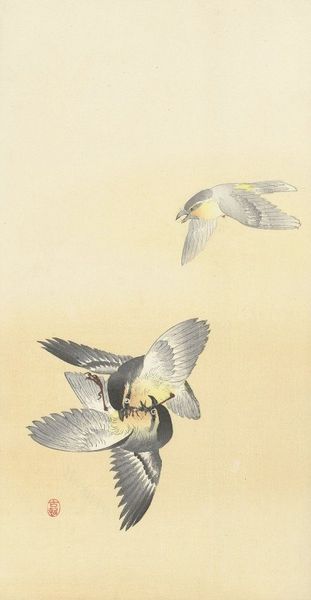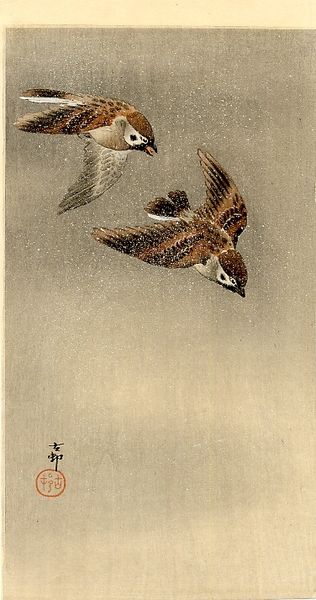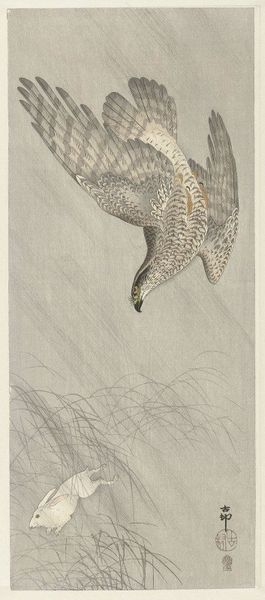
Dimensions: 36.4 x 19 cm
Copyright: Public domain
Curator: This woodblock print, titled "Eagle in Descent," was created in 1905 by Ohara Koson. The artwork is an excellent example of Ukiyo-e style which enjoyed considerable popularity in the West. It captures a fleeting moment with great precision. Editor: My initial impression is one of starkness and dramatic tension. The diagonal lines forming the background emphasize the eagle's sharp descent. I almost feel like I am the prey! Curator: Those lines create a kind of visual weather system around the bird, perhaps a storm through which the eagle is piercing, determined and focused on its catch. The symbolic weight of the eagle, culturally associated with power, vision, and freedom, is also undeniable. It has resonated for a long time. Editor: Absolutely. And let's consider what it represents in the context of the late 19th and early 20th centuries, as Ukiyo-e started blending with Western sensibilities. We might ask how the depiction of nature serves the Japanese identity in this moment of intercultural exchange and potential tension. What meanings did it carry for contemporary Japanese audiences in this rapidly modernizing society? Curator: Well, beyond broader cultural themes, I notice the artist’s deliberate rendering of each feather and claw, signifying not only the inherent power and freedom we assign to eagles, but, even deeper, Koson’s deep observations of the natural world, that is not abstract at all. This precise style served as something of a historical and ecological record, particularly for urban viewers. Editor: And thinking about viewers, this intense gaze is quite interesting, too. What sort of power dynamics do you see? Is it an apex predator as straightforward emblem of nature, or is the print inviting us to question our own positions within power structures? Curator: Perhaps it’s a reminder of our interconnectedness with nature but with its inherent beauty and harsh reality. It forces you to recognize the cycle of predator and prey, survival. Editor: Yes, and situating this image historically reveals interesting parallels between ecological and social justice movements today. Considering both symbolic resonance of Koson's art and our contemporary challenges definitely enriches its meaning for new audiences. Curator: It all boils down to the question: What can be observed, preserved, and what continues to fly away? The eagle represents the impermanence and tenacity. Editor: Very astute, bringing our focus back to our modern sensibilities. The eagle embodies the persistence that's still needed to confront power, protect nature, and advocate justice. Thanks for a stimulating talk.
Comments
No comments
Be the first to comment and join the conversation on the ultimate creative platform.
